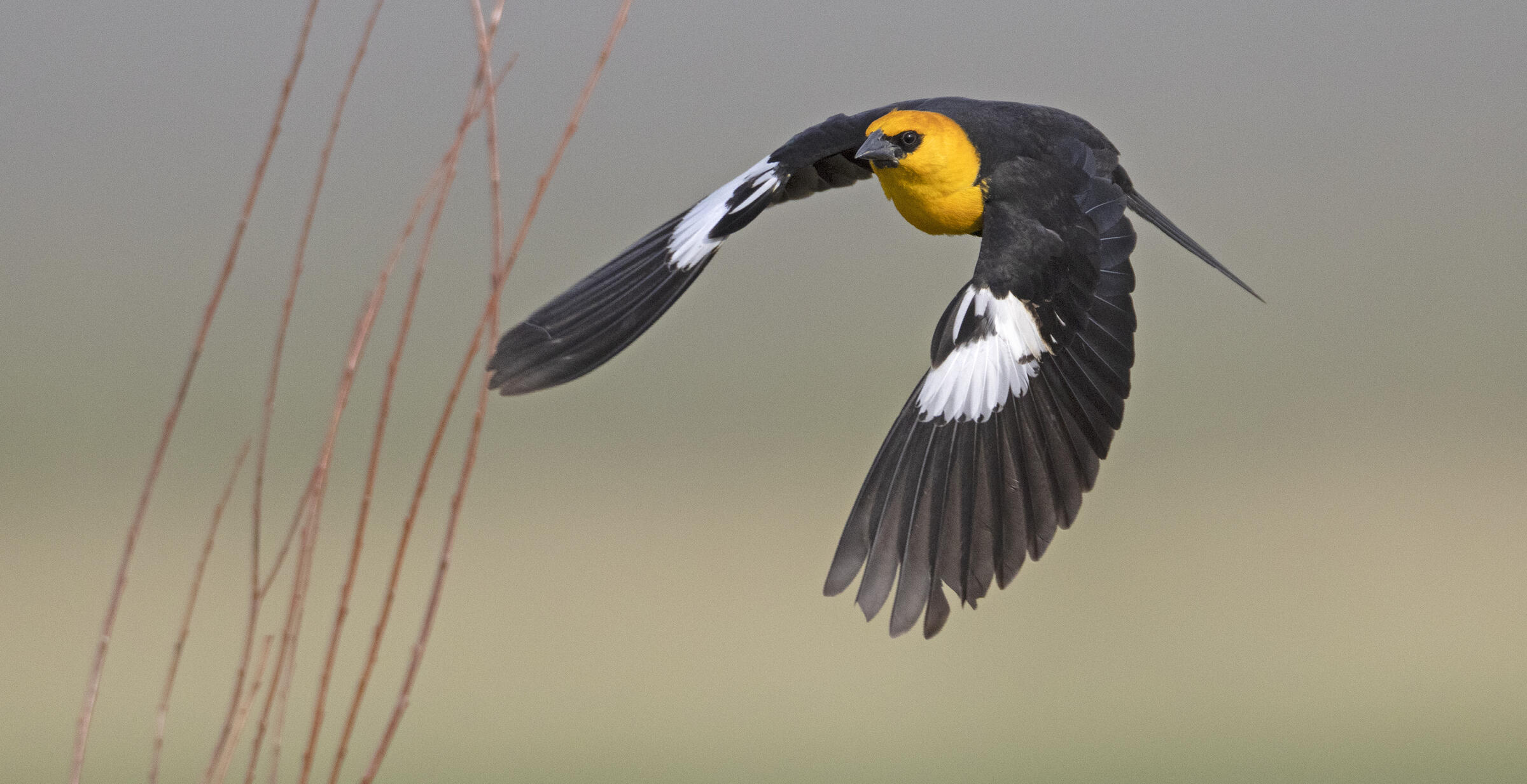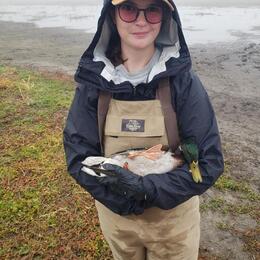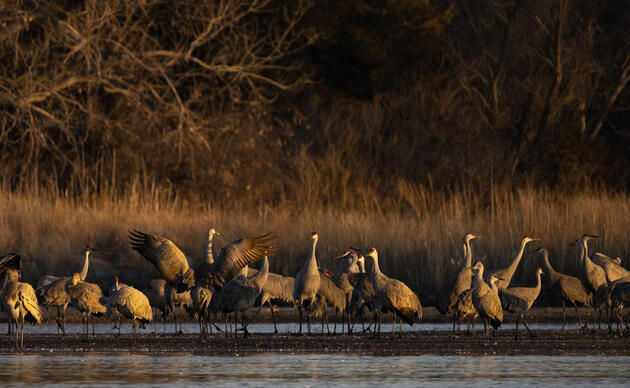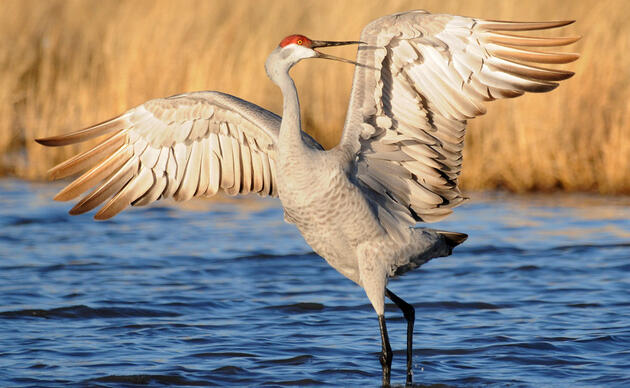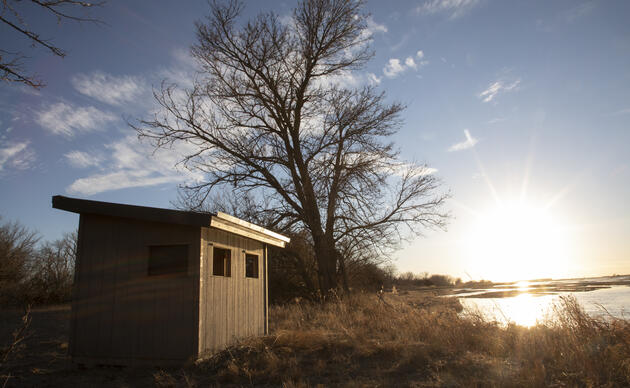Although the sandhill cranes have made their departure here at Rowe Sanctuary, other bird species have been making their return for the warmer months. One species is the very aptly named yellow-headed blackbird (Xanthocephalus xanthocephalus). If you ever thought to yourself, “I wonder what the name of that black bird with a yellow head is,” you have likely found yourself watching one as they have been recently spotted outside of the Iain Nicoloson Audubon Center.
Yellow-headed blackbirds display sexual dimorphism, meaning that the males and females display different appearances. Males are black in appearance with a yellow head, as the name suggests, and white wing patches that are visible in flight. Males are similar in size to a robin standing about eight to eleven inches. Females, on the other hand, are slightly smaller with a brown body, yellow on their face and chest, and white streaks on their belly. Both sexes have broad, rounded wings and rounded square-tipped tails.
During the breeding season, the males produce a distinctive, hoarse song that begins with musical notes and ends with a sound often compared to heavy door swinging on a rusty metal hinge. Females produce chattering song as a form of communication. Yellow-headed blackbirds use a variety of calls including check calls throughout the breeding season, growls between males, male rattles when predators are nearby, and alarmed screams by females.
Over the winter, yellow-headed blackbirds can be found in the Southwestern United States and throughout Mexico. Females typically migrate farther south than their male counterparts. Similar to sandhill cranes, yellow-headed blackbirds are diurnal migrants as they travel during the day and gather for the night in wetlands to roost. Nebraska serves as a summer breeding ground along with other nearby states including Colorado, Wyoming, South Dakota, and more.
Yellow-headed blackbird habitat often consists of fresh marshes, fields, and open country. Breeding grounds are typically located within freshwater sloughs, marshy lake borders, and tall cattails. Nesting occurs in colonies, with males selecting territory to defend within. A single male can have as many as five to eight mates, but often only assists the first female that builds a nest in his territory. Females build a bulky and deep cup nest using aquatic plants lined with dry marsh plants. Females lay four pale gray to pale green, blotched and dotted eggs with an incubation of around eleven to thirteen days. Young tend to leave the nest after about nine to twelve days but remain along the dense marsh plants until about three weeks after hatching.
Yellow-headed blackbirds have a diet consisting of insects and seeds. On average, around sixty six percent of their diet consists of seeds, which includes grass, weed, and waste seeds. Foraging often occurs on ground, in the air, and through following farm machinery in fields to feed on insects turned up by plows. When there is increased availability in the summer, they feed largely on beetles, caterpillars, grasshoppers, ants, wasps, and other invertebrates.
An interesting note about yellow-headed blackbirds is that their scientific name Xanthocephalus translates to yellow head. Fossils of this species have been discovered dating about 100,000 years ago in parts of California, New Mexico, and Utah. The oldest yellow-headed blackbird on record was at least eleven years and eight months old. They were recaptured in Nebraska in 1995 after initial banding in Saskatchewan in 1983.
With their bright yellow heads and unique call, yellow-headed blackbirds are unique presence here at Rowe Sanctuary. Keep an eye and an ear out this summer and you might catch a glimpse of this striking marshland visitor!
Sources:
https://www.allaboutbirds.org/guide/Yellow-headed_Blackbird/maps-range
https://www.allaboutbirds.org/guide/Yellow-headed_Blackbird/overview
https://www.audubon.org/field-guide/bird/yellow-headed-blackbird

